
DAY 7
(Reading time: 6 minutes)
Breakfast from the landlady wasn’t bad at all – sushi, onigiri, various rice rolls, yogurts, fruits… yes, there was even toast bread… no, we didn’t eat it.

There was so much food that we even took some for snacks, especially the onigiri.
In the morning, we admired the golden beauty of Kinkakuji Pavilion, which once served as a refuge for Shogun Yoshimitsu Ashikaga after he handed over the office to his son. After Yoshimitsu’s death, the villa was converted into a Zen temple.

The next and main program of today was ancient Nara, the former capital of Japan and the seat of the emperor in years 710-794. High concentration of temples and shrines attracts tourists as much as the ubiquitous sika deer, which you can feed here, unlike on Miyajima.
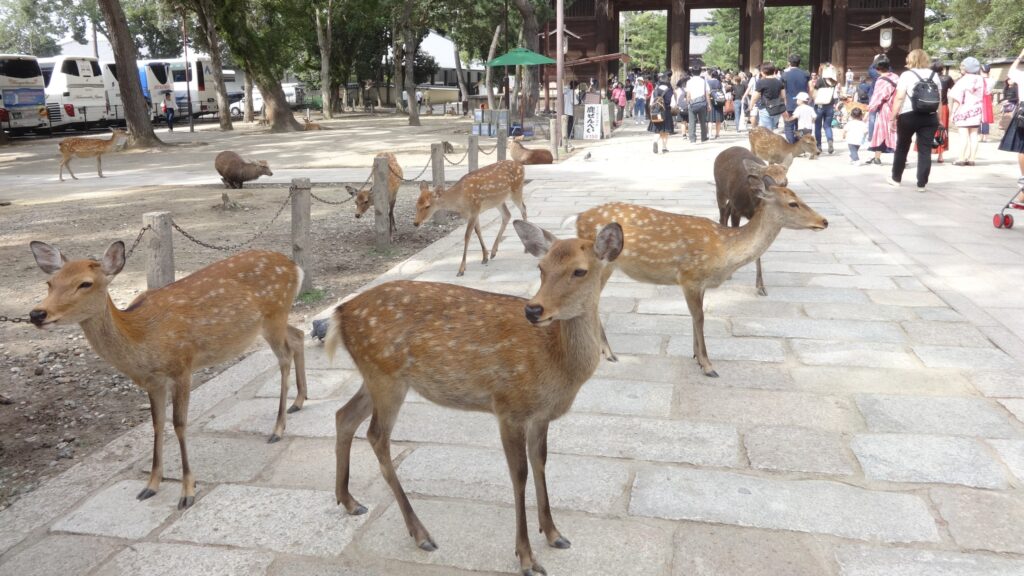
The deer and roe deer are accustomed to a constant supply of food; sometimes they even wait directly at the feeding stalls, and their stomachs seem bottomless. You can buy cookies for a few yen and feed the cute ungulates with them.

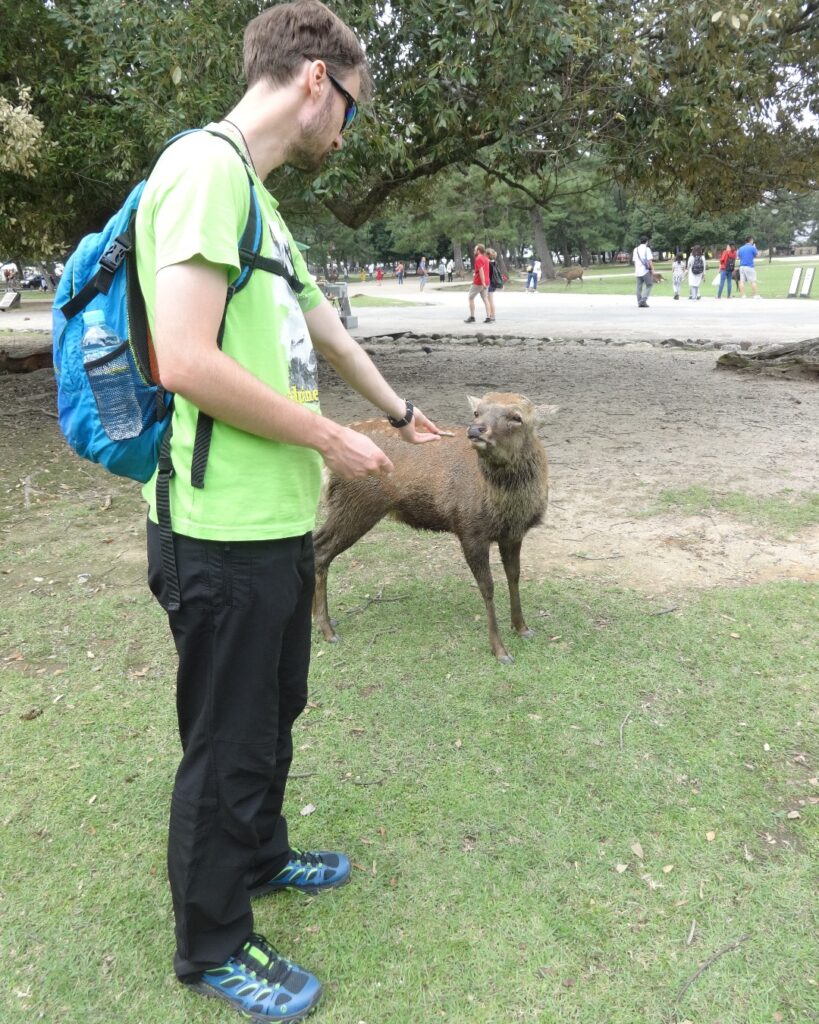
In return, they’ll give you a selfie and you can even pet them.
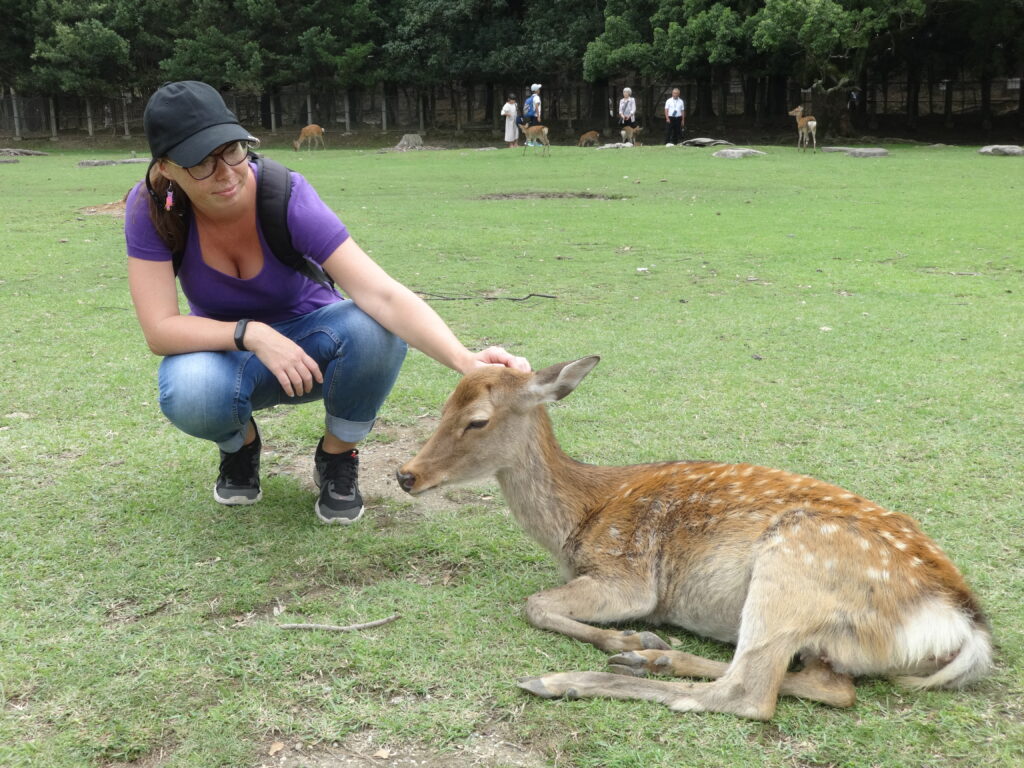
They can supposedly bow as well, but we didn’t notice that. They rather looked at us as their servants providing them with their livelihood.

The most impressive structure in the whole area is Buddhist temple Todaiji. It holds the title of the largest wooden building in the world. In the past, the temple was also adorned with two 100-meter-tall pagodas, but they were destroyed during earthquakes. Todaiji was built in the 8th century and has been reconstructed several times due to fires. The current form of the temple is quite immense, but unfortunately still about 30% smaller than it used to be.
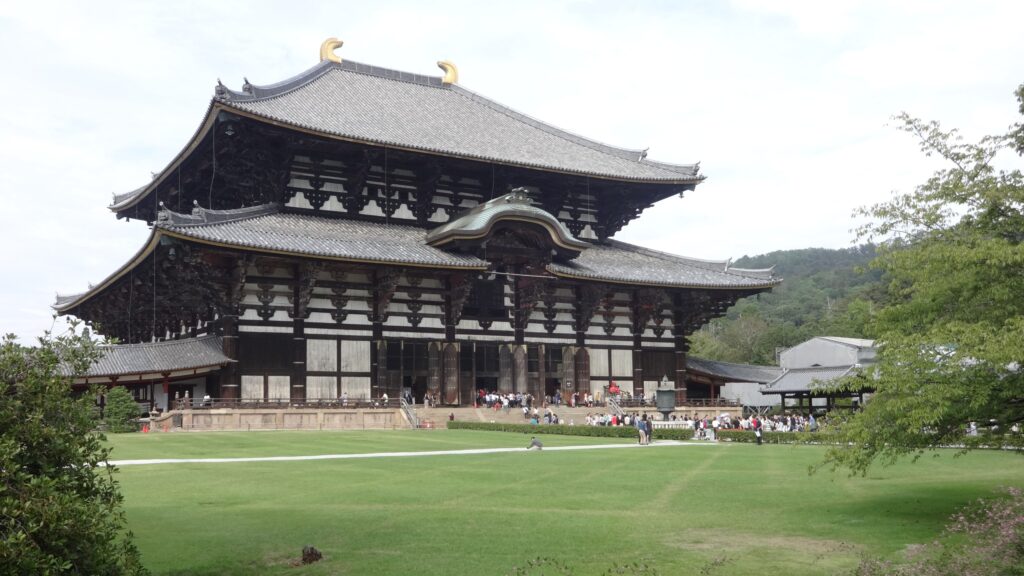
Inside the temple sits a statue of Buddha Vairocana, and at a height of 15 meters, it is the largest bronze statue of its kind in the world.
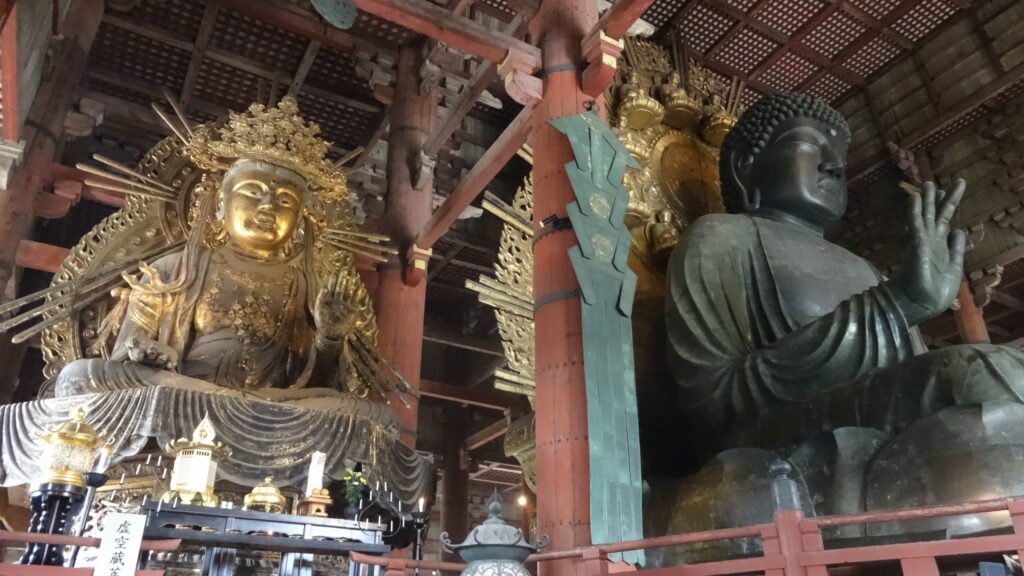
Upon exiting the main hall on the right side, you’ll find a wooden pillar with a hole. It is said to be as large as a nostril of the Buddha statue. If you successfully crawl through it, it will bring you luck, and especially in your next life, you will attain enlightenment. I would like to point out that the hole is “pleasantly” passable for persons of a younger age or skinny adults of a petite stature.

Subsequently, we randomly wandered into the park. Every step, a deer; every two steps, a temple or shrine. School trips were not absent either.
The ubiquitous refreshment stalls offered traditional delicacies such as taiyaki, takoyaki, teriyaki, and various other “yaki,” which in Japanese means grilled or prepared over direct heat. We had mochi (rice cake) with red bean paste, nothing special in itself, but a fresh strawberry in the middle raised the price of one piece to about 5 dollars.
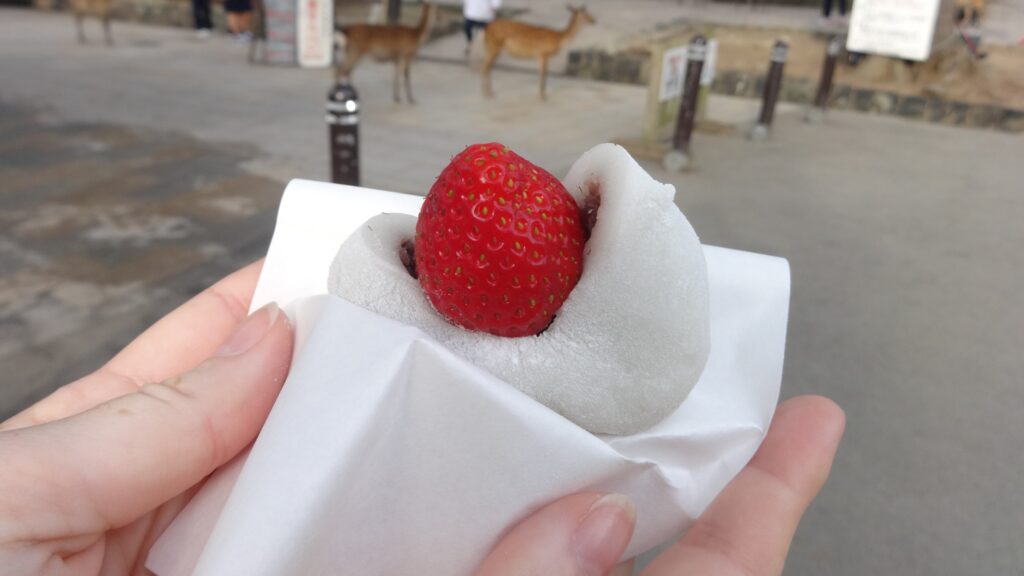
Strawberries are generally very expensive in Japan. You can usually see them packaged individually in cute nets, puffed-up cushions, or boxes, and as such, they serve more as a gift than as a filling for a pastry or a cake. It’s similar with apples, too. The price for 1 apple here corresponds to the price for 1 kilogram of apples in our country, and can even be higher.
As evening approached, we headed back to the train when we stumbled upon the Uneme Matsuri festival at Lake Surosawa.
According to legend, there was a girl (uneme) at the imperial court who fell in love with the emperor. The emperor partially returned her feelings, but after some time, he rejected her. The girl couldn’t bear the rejection and dedicated her body and life to Lake Surosawa. Her spirit still lingers here and occasionally walks along the shores of the lake. To appease the soul of the deceased girl, the locals built a shrine nearby and hold the festival annually.
It begins every September in the evening before the full moon. At 5 p.m., a procession of locals in period costumes starts from JR Nara Station and walks along Sanjo-dori shopping street towards the temple dedicated to the drowned girl. At 7 p.m., dragon boats emerge from the shores of Lake Surosawa, and one of them carries a woman disguised as uneme. They sail around the lake, and thus the festival concludes.

Due to the late hour, we didn’t manage to watch the whole performance, but the area where the festival took place was beautifully decorated, illuminated with paper lanterns, and people of all ages, including very young children, were dressed in period costumes in the procession. Amazing atmosphere. We didn’t expect to come across such a significant festival today, but it was a pleasure to see at least part of it.
-endy-
DONKEY’S SPECIAL:
*fillings can be different, these are traditional
-mj-